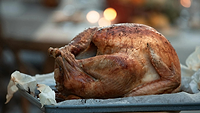England Salmonella Cases Back to Pre-Pandemic Levels, S. Enteritidis Most Common

Image credit: Tetiana Bykovets via Unsplash
The UK Health Security Agency (UKHSA) recently published an analysis of national data regarding cases and outbreaks of non-typhoidal Salmonella from 2013–2022. The analysis showed that the number of reported Salmonella cases in England returned to pre-COVID-19 pandemic levels, increasing from 5,033 cases in 2021 to 8,125 cases in 2022.
Excluding pandemic years 2020 and 2021, the number of Salmonella laboratory reports in 2022 was similar to that of previous years. A total of 11 foodborne salmonellosis outbreaks were recorded in 2022, comprising 591 cases (574 of which were laboratory-confirmed) of the 8,125 total salmonellosis cases. These outbreaks were linked to foods like fresh coriander leaves, kebab meat, chicken, cucumbers, raw milk, chocolate products, and meat products.
Similar to 2019, the highest number of laboratory-confirmed cases of Salmonella that occurred during 2022 were in London, with 1,631 reports and a reporting rate of 18.4 cases per 100,000 people. August was the peak month for reported salmonellosis cases in 2022, whereas the peak reporting month based upon the 5-year median from 2015–2019 was September. Representation of male to female cases was approximately 50 percent (where case gender was known), with 0–9 being the most affected age group.
S. Enteritidis was the most commonly reported serovar in 2022, consistent with previous years (prior to the COVID-19 pandemic), followed by S. Typhimurium. Reports of S. Typhimurium also increased from 1,568 in 2019, to 1,219 in 2021, and to 1,731 in 2022.
Data for the report was derived from UKHSA’s Second Generation Surveillance System (SGSS), and the Gastrointestinal Infections and Food Safety (One Health) division’s electronic foodborne and non-foodborne outbreak surveillance system (GIFSOH’s eFOSS).
Looking for a reprint of this article?
From high-res PDFs to custom plaques, order your copy today!









